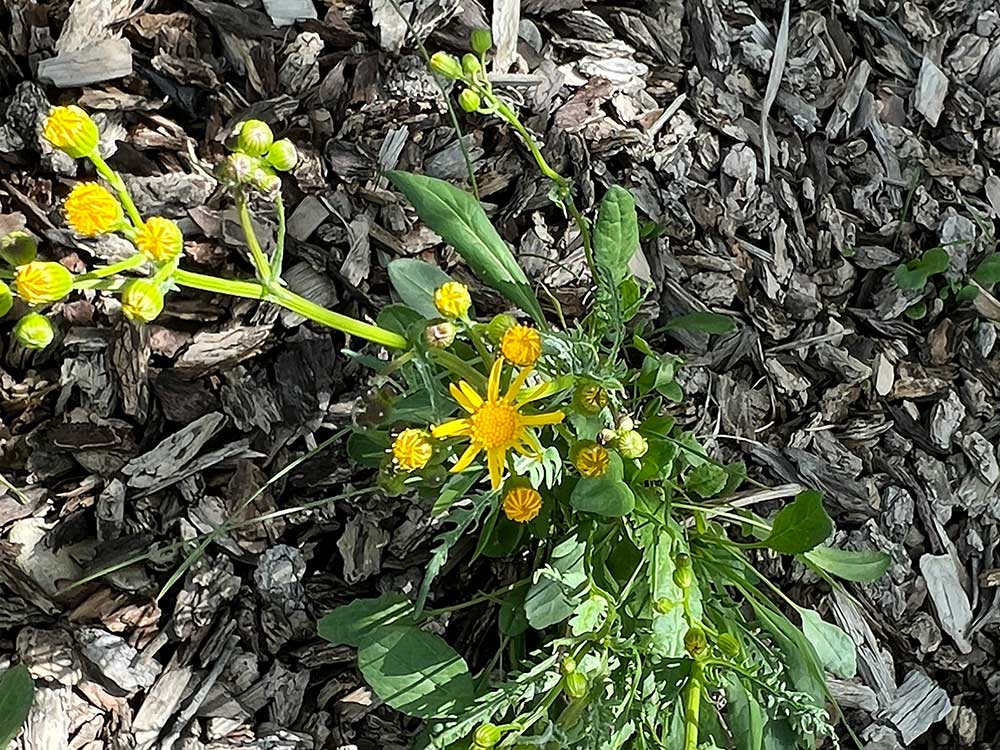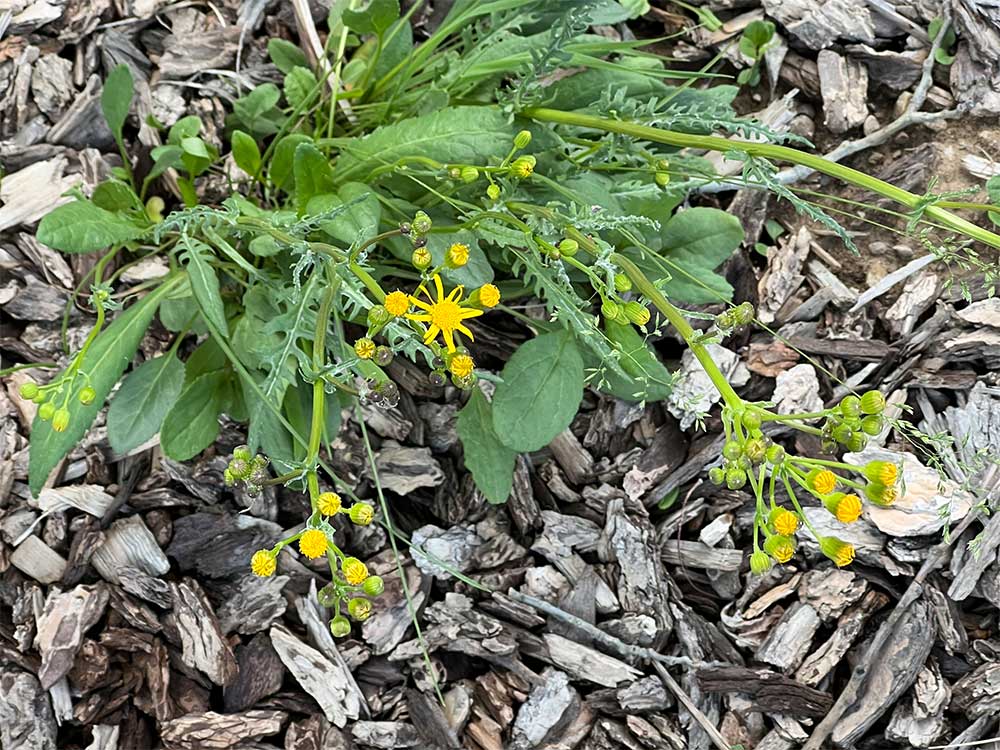Packera streptanthifolia / Rocky Mountain groundsel
- yellow-flowered composite; “flowers” on branched inflorescence
- 8-13 half-inch ray florets, usually spaced apart
- thick, spatula-shaped basal leaves without teeth or clefts
- thin, often deeply lobed stem leaves
- dry woodlands and rocky places
Also known as: Rocky Mountain butterweed
Synonyms: too many to mention
See also: Packera multilobata / lobeleaf groundsel, Packera pseudaurea / falsegold groundsel
Rocky Mountain groundsel is a perennial herb producing usually one erect flowering stem, although sometimes a cluster of a few stems. It ranges in height from a few inches to a couple feet. The inflorescence is a loose grouping (corymb or umbel) of two or more flower heads, each with 8 to 13, half-inch yellow ray florets. The disk florets are many and also yellow.
The spatula-shaped basal leaves form a dense mat. They are oval or lance-shaped on long petioles. They may also be somewhat succulent, i.e. thick and firm. Leaves on the flowering stalks are smaller and thinner, and may lack petioles. As in the photos here, they may also be deeply or shallowly indented/lobed… definitely not the shape of the basal leaves.
The stems of Rocky Mountain groundsel are usually, but not always, hairy. Hairiness can vary fairly widely from one population to another and with the age of the plant. Indeed, the ones shown in the photos here are not.
Rocky Mountain groundsel is are often associated with sagebrush but can also be found in desert, montane, pine forest and spruce-fir communities, most often in dry woodlands or rocky places.
Rocky Mountain groundsel is similar in appearance to multilobed groundsel but lacks the deeply cleft leaves. The leaves of the latter also don’t tend towards succulence. Things can be complicated, however by interspecific hybridization. It can be distinguished from falsegold groundsel by its lack of toothed leaves. Falsegold groundsel is also more limited to wet environments.
| Color | |
|---|---|
| Family | |
| Blossom size | |
| Inflorescence size | |
| Inflorescence type | |
| When? | |
| Where? |


